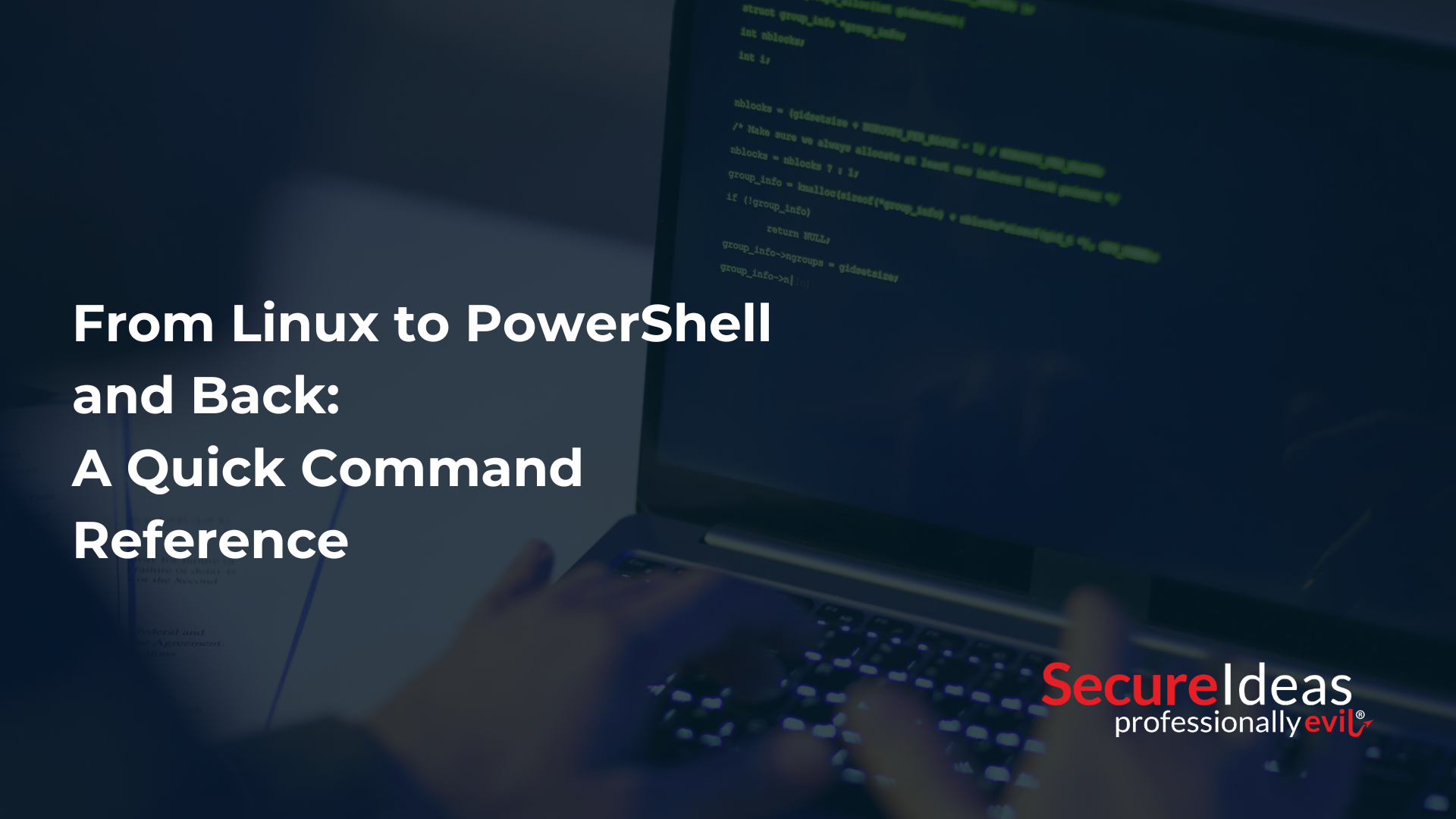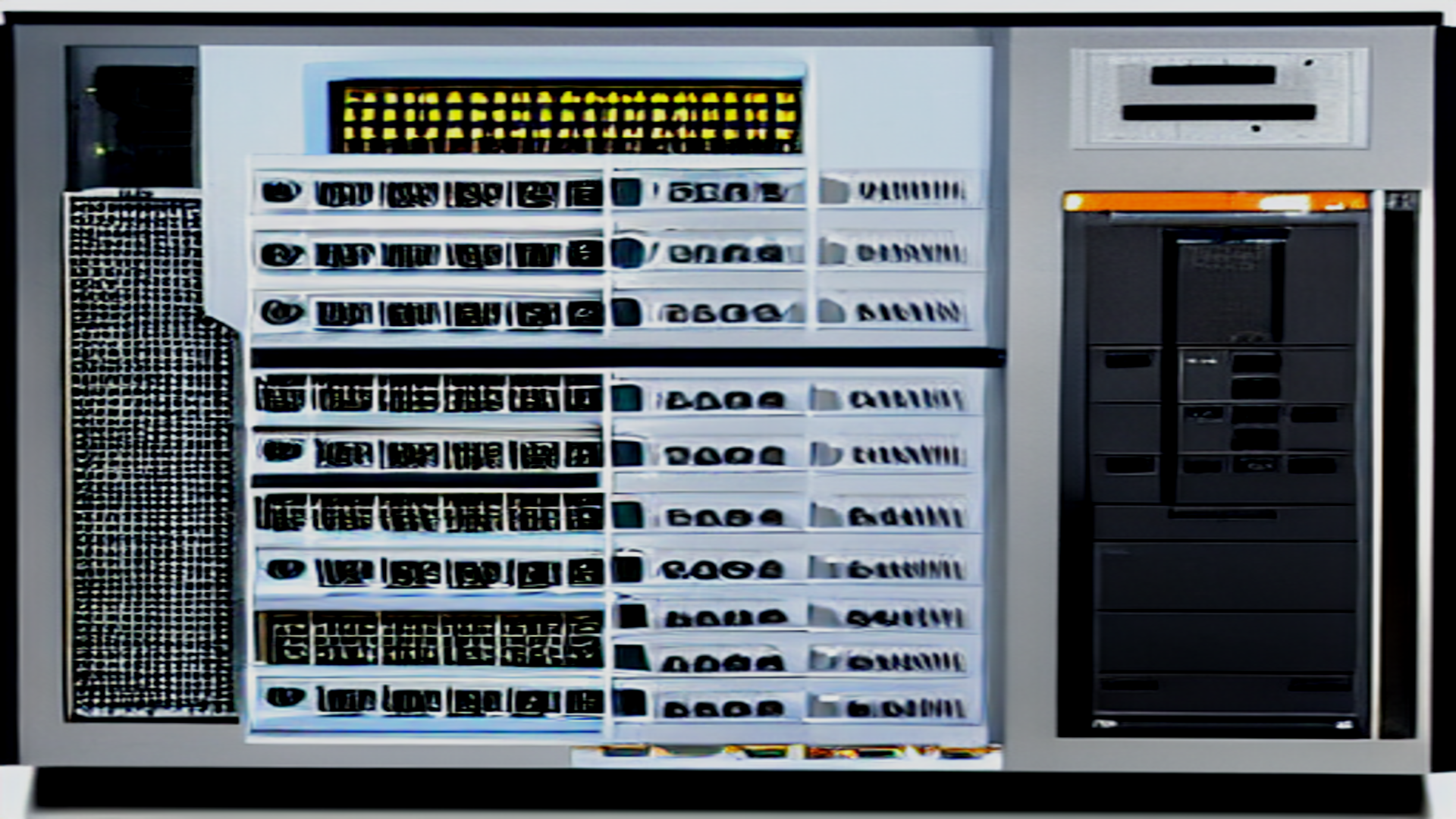When working with PowerShell to automate tasks, managing credentials securely is a critical concern. Hardcoding passwords in scripts or storing them in plaintext poses significant security risks. In this post, we will explore best practices for handling credentials in PowerShell securely when designing and provisioning scripted tasks, along with the attack vectors associated with each method.
Avoid Hardcoded Passwords
One of the most common mistakes in PowerShell scripting is embedding credentials directly in scripts. This practice exposes passwords to anyone with access to the script file and may lead to credential leakage in version control systems or log files.
Bad Practice Example:
$Username = "admin"
$Password = "P@ssw0rd123"
Instead of hardcoding passwords, use secure methods to store and retrieve credentials dynamically.
Attack Vectors:
- Source Code Exposure: If the script is committed to version control, credentials will be exposed.
- Insider Threats: Any user with access to the script file can extract credentials.
- Malware & Code Scrapers: Malicious software can scan scripts for hardcoded secrets.
Protections & Restrictions:
File permissions can restrict access to reading the script file, but this method is still inherently insecure and should be avoided.
Verdict:
Avoid hardcoded secrets entirely. Hardcoded passwords are an immediate security risk.
Secure Strings Still Need Securing
PowerShell provides ConvertTo-SecureString to encrypt sensitive strings such as passwords, for storage and retrieval without exposing them in clear text. However, Secure Strings offer only basic protection—they rely on the Windows Data Protection API (DPAPI) and can be decrypted under certain conditions. While this helps avoid plain text exposure, credentials remain vulnerable if not properly handled and should be supplemented with stronger mechanisms like secure vaults.
Example: Saving an Encrypted Password to a File
"P@ssw0rd123" | ConvertTo-SecureString -AsPlainText -Force | ConvertFrom-SecureString | Out-File "C:\secure-password.txt"
Example: Retrieving the Password
$SecurePassword = Get-Content "C:\secure-password.txt" | ConvertTo-SecureString
$Credential = New-Object System.Management.Automation.PSCredential("Username", $SecurePassword)
Attack Vectors:
- File Theft: If an attacker gains access to the encrypted file, they can attempt decryption.
- User-Specific Encryption: Secure Strings rely on DPAPI, meaning that they are encrypted in a way that is tied to the user account on the local system. If an attacker gains access to the same user profile, they can decrypt stored Secure Strings.
- Trivial Decryption: Secure Strings can be easily decrypted by any process running in the same user context in which they were encrypted, or by an administrator on the same machine. Because they rely on DPAPI, a compromised user session is sufficient to access and revert the data to plaintext using simple PowerShell commands:
$SecurePassword = ConvertTo-SecureString "P@ssw0rd123" -AsPlainText -Force
$DecryptedPassword = [System.Runtime.InteropServices.Marshal]::PtrToStringAuto([System.Runtime.InteropServices.Marshal]::SecureStringToBSTR($SecurePassword))
Write-Output $DecryptedPassword # Outputs: P@ssw0rd123
- Key Exposure:
ConvertTo-SecureStringwithout a user-specific key can be trivially decrypted.
Protections & Restrictions:
- Reversible Encryption: Secure Strings rely on DPAPI, which encrypts data in a way that is tied to the user account on the same local machine. This means that only the user who encrypted the data—or an administrator on the same machine—can decrypt it.
- Avoid Storing Secure Strings in Files: Storing encrypted Secure Strings in a file still makes them accessible to anyone who can decrypt them.
- User-Supplied Key Encryption: SecureStrings can be encrypted using a user-provided key via the
-Keyparameter, replacing the default DPAPI-based encryption with AES-based symmetric encryption.
Verdict:
Limit to in-memory protection. Best used for short-term, in-memory protection of sensitive data within a single session. Avoid using Secure Strings for persistent storage—opt for a more secure vault or credential management system instead.
Use Environment Variables for Runtime Credentials
Environment variables are commonly used for passing secrets to PowerShell scripts in automated workflows. In a CI/CD pipeline, a controlling automation system—such as Azure DevOps—can securely inject credentials into a script as an environment variable at runtime. This minimizes exposure and avoids the need for persistent storage of sensitive information.
Example: Passing Credentials to a PowerShell Script in Azure DevOps
Step 1: Set the Environment Variable in the CI/CD Pipeline
In your CI/CD tool (e.g., Azure DevOps, Jenkins, GitHub Actions), you can set an environment variable for the credentials. Here's an example using Azure DevOps:
# azure-pipelines.yml
variables:
CREDENTIAL: $(YourSecureCredential)
steps:
- powershell: |
./YourScript.ps1
env:
CREDENTIAL: $(CREDENTIAL)
Step 2: Read the Environment Variable in the PowerShell Script
In your PowerShell script, you can read the environment variable and convert it to a secure string:
# YourScript.ps1
# Read the environment variable
$plainTextCredential = $env:CREDENTIAL
# Convert the plain text credential to a secure string
$secureCredential = ConvertTo-SecureString $plainTextCredential -AsPlainText -Force
# Use the secure credential
$credential = New-Object System.Management.Automation.PSCredential("username", $secureCredential)
# Example usage: Connect to a remote system
# Enter your command here
# e.g., Invoke-Command -ComputerName RemoteServer -Credential $credential -ScriptBlock { ... }
Security Note
Ensure that your CI/CD tool handles sensitive environment variables securely and does not expose them in logs or error messages. Always use built-in features such as secret masking to prevent unintended exposure. For example, in Azure DevOps, secrets can be stored as Pipeline Variables and securely passed to scripts as environment variables.
Attack Vectors:
- Process Dumping: Attackers with local access can dump process memory and extract secrets.
- User Access: Environment variables are accessible by the user and any subprocesses.
Protections & Restrictions:
- Scope Management: Most CI/CD platforms ensure secrets are scoped to the job or step where they are used and are not exposed in logs. Carefully managing scope—limiting variable access to only the tasks or processes that require it—helps minimize the risk of unintended exposure.
- Lifecycle Management: Secrets injected via process-scoped environment variables exist only during execution and do not persist beyond the pipeline run.
- Access Controls: Use Azure DevOps permissions to restrict access to pipelines and variables.
Verdict:
Use only for transient secrets. CI/CD pipelines should inject secrets at runtime and avoid long-term storage of credentials.
Use the Windows Credential Manager
Windows Credential Manager provides a secure, user-scoped storage mechanism for credentials in the Windows operating system. It uses the Data Protection API (DPAPI) to encrypt stored credentials, tying encryption to the user account and local machine. Credentials stored this way can be retrieved by any process running under the same user context without prompting for authentication, making it similar in risk profile to Secure Strings.
PowerShell can interact with Credential Manager using the Get-StoredCredential and New-StoredCredential cmdlets from the CredentialManager module. While convenient for local automation, Credential Manager does not support password gating or lifecycle features like rotation, auditing, or expiration.
Compared to Secure Strings, Credential Manager centralizes storage in a dedicated OS-managed store rather than encoding secrets inline or in a file. However, both rely on the security of the local machine and user session. Credential Manager is best suited for securely accessing stored credentials on a trusted Windows environment with appropriate user profile protections in place.
Storing Credentials:
cmdkey /add:"TargetName" /user:"YourUsername" /pass:"YourSecurePassword"
Retrieving Credentials in PowerShell:
$Credential = Get-StoredCredential -Target "TargetName"
Attack Vectors:
- User Context Access: Any script or process running under the same user account can access credentials stored in Credential Manager without additional prompts or authentication.
- Administrative Access: An attacker with local administrative privileges can extract secrets from Credential Manager, bypassing user protections.
- Credential Dumping Tools: Tools like Mimikatz can target and extract stored credentials if the system is compromised.
- Lack of Auditing or Expiry: Credential Manager does not support access logging, expiration policies, or alerting, making it difficult to detect abuse or unauthorized access.
Protections & Restrictions:
- User Context Binding: Access is limited to processes running under the same user account that stored the credentials.
- DPAPI Encryption: Credentials are encrypted using Windows DPAPI, tying them to the user profile and local machine.
- No Access Prompts Required: Credentials can be retrieved silently by authorized processes within the same session.
- Lacks Granular Controls: There is no native support for expiration, audit logging, or scoping access beyond the user or administrative boundary.
- Not Isolated from Admin Access: Administrative users can extract stored credentials regardless of the user context.
Verdict:
Use with caution for local automation. Credential Manager provides convenience but lacks modern access controls, auditing, and isolation from administrative access. Best suited for single-user or low-risk automation scenarios where secrets must persist across sessions.
Use Secret Management Modules
Microsoft provides the Microsoft.PowerShell.SecretManagement module, which acts as a unified framework for securely storing and retrieving secrets across different vault backends. These vaults can range from local storage solutions like Windows Credential Manager and SecretStore to enterprise-scale platforms like Azure Key Vault or HashiCorp Vault.
One of the simplest and most accessible vault extensions for local use is SecretStore. Though not bundled with PowerShell by default, it is the official local vault implementation supported by Microsoft and can be installed alongside the SecretManagement module. SecretStore stores secrets in an AES-encrypted file on the local system, scoped to the current user, and optionally protected by a vault password.
SecretStore is well-suited for development and automation scenarios that require securely persisting secrets on a local machine without needing cloud integration. It can be configured with password protection to guard against unauthorized access, even in cases where the user profile is compromised. By requiring a password to unlock the vault, SecretStore introduces a second layer of defense beyond user context. While it lacks advanced features like access auditing or external RBAC, its simplicity and tight PowerShell integration make it a practical option for many use cases.
Storing a Secret:
Set-Secret -Name "MyPassword" -Secret "P@ssw0rd123" -Vault "SecretStore"
Retrieving a Secret:
$Secret = Get-Secret -Name "MyPassword" -Vault "SecretStore"
Vaults provide a way to securely store and retrieve secrets while limiting their exposure. Rather than embedding credentials in scripts or storing them in plaintext files, scripts can retrieve secrets at runtime from a secured vault, reducing the risk of accidental leaks or unauthorized access. Additionally, administrators can configure multiple vaults for different environments or scopes—such as dev, test, and production—to compartmentalize secrets and reduce the blast radius of potential exposure
Attack Vectors:
- Vault Misconfiguration: Poorly configured vault permissions can allow unauthorized users or scripts to access stored secrets.
- Token Leakage: If authentication tokens used to access external vaults are exposed, an attacker could use them to retrieve sensitive information.
Protections & Restrictions:
- Vault-Level Isolation: Each registered vault is managed independently, allowing administrators to compartmentalize secrets by purpose or environment (e.g., dev, test, prod).
- Password Protection (SecretStore): Local vaults like SecretStore can be configured to require a password to unlock, adding a second layer of access control beyond user context.
- Encrypted Storage: Secrets are stored encrypted at rest (using AES in SecretStore) and are not readable without authorized access.
- Pluggable Backends: SecretManagement supports vaults with advanced security features such as RBAC, audit logging, and hardware-backed protection depending on the provider.
- Scoping and Permissions: Secrets can be scoped to specific users, applications, or contexts, reducing unnecessary exposure.
Verdict:
Recommended for most use cases. Versatile and secure. SecretManagement and supported vaults, including SecretStore, offer strong local protection and scalable options for multi-environment setups.
Use Cloud-Based Secrets Management Solutions
Cloud-based secrets management solutions are ideal for enterprise environments, distributed applications, and workloads that span multiple systems or geographic regions. These solutions provide centralized control over secrets with strong access policies, audit logging, and encryption mechanisms, making them well-suited for scenarios where scalability, compliance, or operational visibility are priorities.
Solutions like Azure Key Vault, AWS Secrets Manager, and HashiCorp Vault offer seamless integration with cloud-native and hybrid infrastructures. They allow secrets to be retrieved dynamically at runtime without hardcoding credentials into scripts or storing them on disk. These services often support role-based access control (RBAC), managed identities, secret versioning, and access auditing, which are critical for enforcing least privilege and detecting unauthorized access.
Use cases where cloud-based secrets management is most effective include:
- Automation tasks in cloud-hosted CI/CD pipelines
- Keys for integrated APIs or services
- Integrating secrets into containerized or serverless applications
By using cloud-hosted vaults, organizations can reduce local secret sprawl and apply uniform access policies across teams and infrastructure.
Attack Vectors:
- API Misconfiguration: Improperly defined access policies or overly permissive roles can lead to unauthorized access to secrets.
- Credential Exposure: If cloud credentials (e.g., access tokens or keys) are compromised, an attacker may extract secrets remotely.
- Misuse of Automation Accounts: Automation identities with excessive privileges may unintentionally expose sensitive data across systems.
Protections & Restrictions:
- Role-Based Access Control (RBAC): Fine-grained access policies allow precise control over who can access which secrets.
- Managed Identity Integration: Avoids the need for stored credentials by using trusted identity tokens for authentication.
- End-to-End Encryption: Secrets are encrypted both in transit and at rest using cloud-native encryption mechanisms.
- Audit Logging and Monitoring: Many cloud vaults support event logging, helping detect unauthorized or suspicious access attempts.
- Secret Versioning and Expiry: Built-in features allow automated secret rotation, expiration, and rollback when needed.
Verdict:
Highly recommended for distributed and cloud-native workloads. Cloud-based secret vaults offer the strongest controls for access, auditing, and lifecycle management—ideal for teams managing credentials across systems, services, or environments.
Final Thoughts
Handling credentials securely in PowerShell requires a combination of best practices. Regardless of the storage method, it is essential to:
- Ensure that only authorized users can access stored secrets.
- Secure scripts that interact with credentials using proper permissions.
- Prevent sensitive data from being exposed through logging and debugging output.
By combining these access control practices with secure credential storage techniques—such as avoiding hardcoded passwords, using encrypted storage, and leveraging secure vaults—you can enhance the security of your automated processes and reduce the risk of credential exposure.



